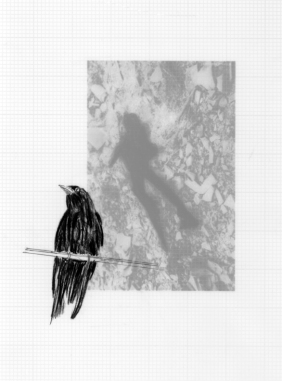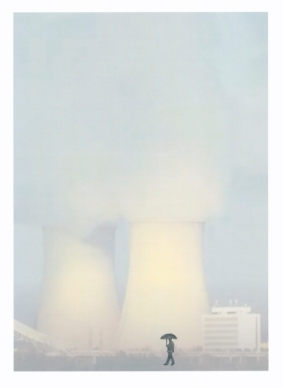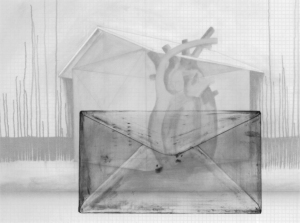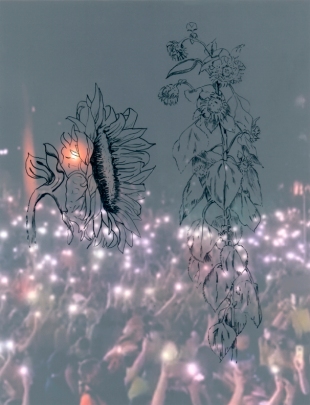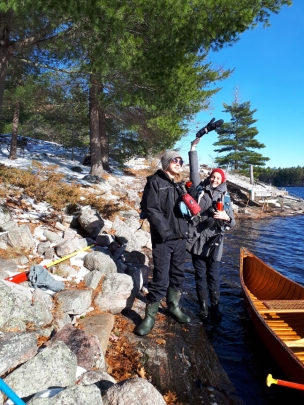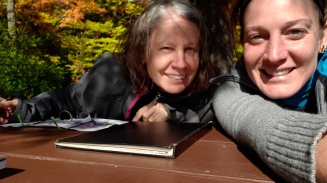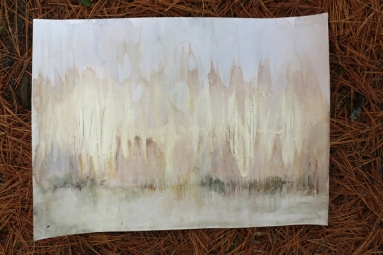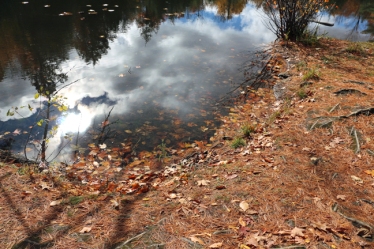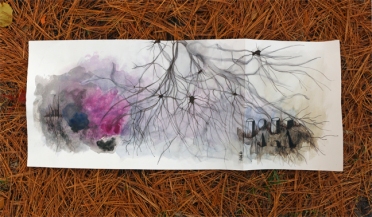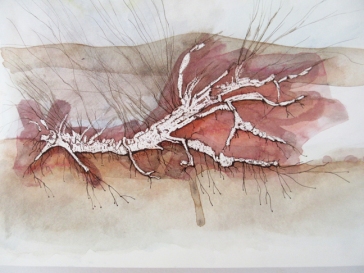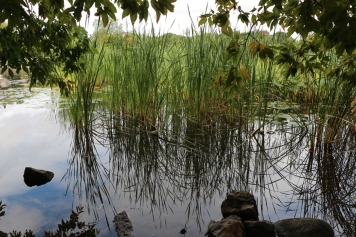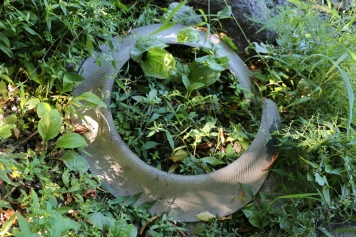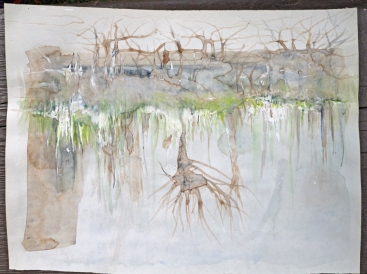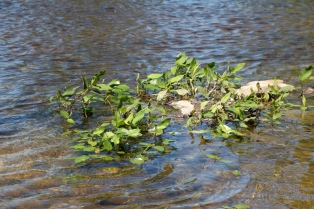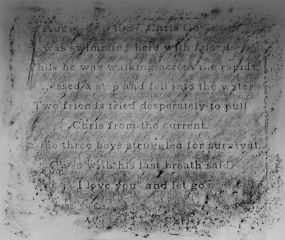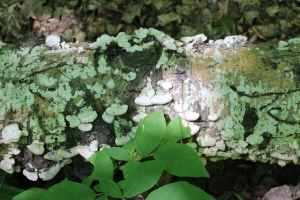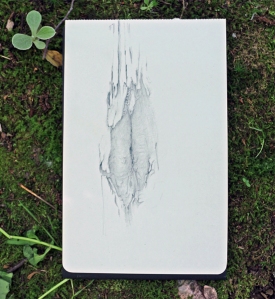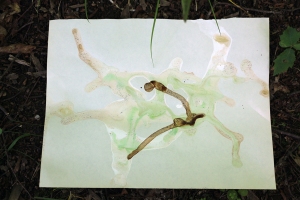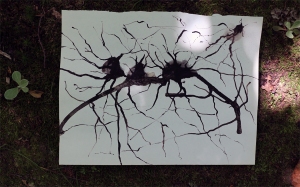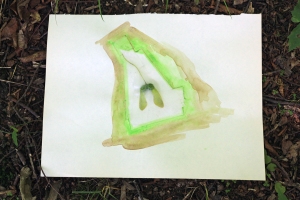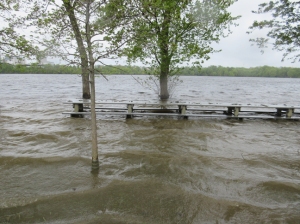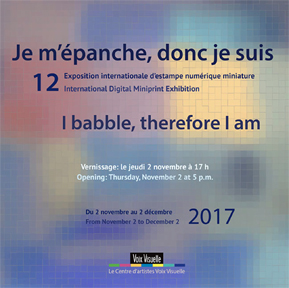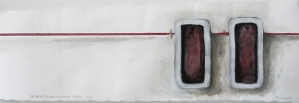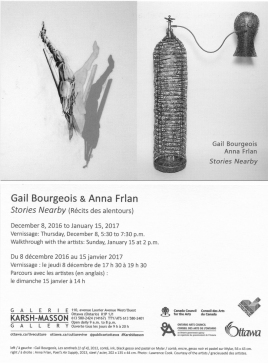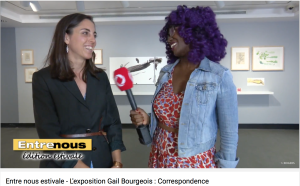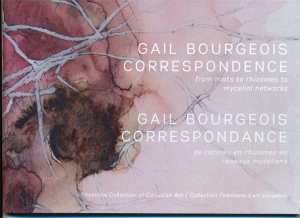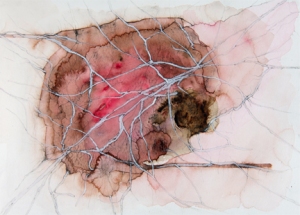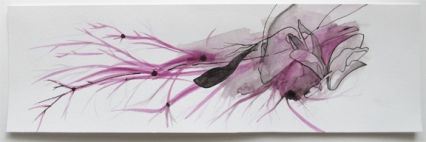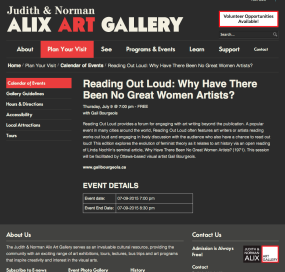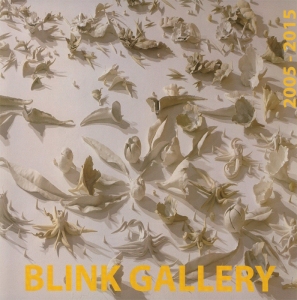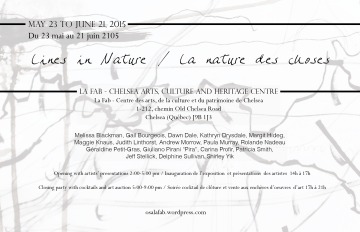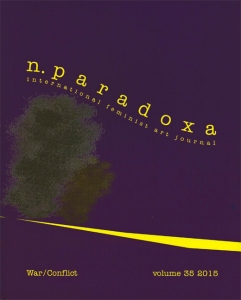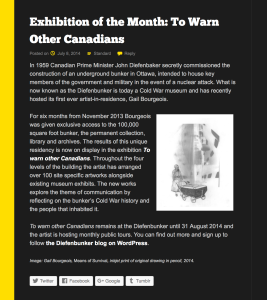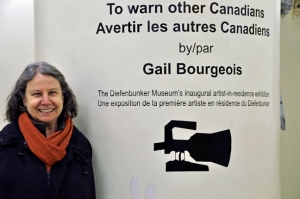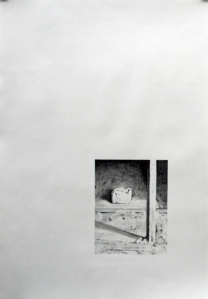2020
a mid-summer note
I have been thinking of people I have not seen in what feels like a long while. Since I do not maintain a social media presence, this blog is my forum. The August 6th post is begun on the 75th anniversary of the atom bombing of Hiroshima. On August 11, the mayor of Nagasaki called for a worldwide ban on nuclear weapons. “… Same as with the novel coronavirus, which we did not fear until it began spreading among our immediate surroundings, if humanity is not aware of the threat of nuclear weapons until they are used again, we will find ourselves in an irrevocable predicament.”
The Dooms Day Clock is at 100 seconds to midnight.
While Ensemble Nomad.e takes a short break, I am getting out into nature’s biodiversity most mornings. My hiking experiences are very different from drawing on site. When I sit to draw, the immediate environment gets folded into me producing a subjectivity through the experience. The same things happen when moving through a space, but an embodied recognition of this vital connection does not register the same way.
In response to the constraints of the pandemic, I am grounded through walks and hikes in nature. The dry spring and eventual summer showers have produced a myriad of wildflowers to enchant. One favorite walking trails is only a kilometer of wooded area, so going around more than once becomes very satisfying. The first tour around fills certain senses. For me it is always the light and what the sunspots reveal and hide that draws my attention. Looking up through the tall tree branches to where the sky fills the space is another. Each tour is a different walk. Subsequent tours reveal details closer to the path. Small grasses and flowers, mushrooms and fungi, moving green and brown areas where creatures are scurrying to avoid the lumbering figure coming along the path. Odours change with the time of day, as with the seasons. Smells give substance to the moment of being there. Always, the sightings and songs of the birds fill me with wonder and joy. Life’s riches lie in process-based outcomes.
Follow brontë velez speaking about bio regions on Instagram : @littlenows
Here are the poignant thoughts of Syrus Marcus Ware writing on BLM and the disability movement
Here are two of my works and
two works considering our collective precarity.
I was born in the United States of settler and indigenous ancestors at the dawn of the cold war. My parents engaged in ban-the-bomb and social justice issues. During the McCarthy Era, they fought against bigotry and poverty. These early influences shaped my view of the world. I understood early in life that what we do to others is what we do to ourselves. In my youth I was deeply affected by the civil rights movement for equal justice and, later, by feminist expressions of equal pay for equal work. I freely shared my views in the heady days of the 1960s. The present day uprisings – from the Occupy Movement to Black Lives Matter – are not only just, they are necessary for the future of the planet. The intersection of poverty, racism and colonialism with the global response to the COVID-19 pandemic is unmistakable. Earth is burning.
Elaine Scarry wrote an extensive article on the 75th anniversary of the bombing of Hiroshima and Nagasaki for the Bulletin of the Atomic Scientist.
Lac Leamy
June 2020
Ensemble Nomad.e has had the luxury of five consecutive days at Lac Leamy with sunny warm weather and the time to settle into a new season of residencies among the constraints of physical distancing. While drawing and listening to the birds, we have had great conversations around this confluence of multi-layered crises. Nature’s unbalance is present at the later part of the week as high levels of ozone are activated by the sun and high temperatures. Watching the state-sanctioned violence suffered by Black and Indigenous peoples and listening to their stories has helped us lean into and focus the direction of some new artwork for public spaces. As Ensemble Nomad.e attempts to heal the wound of our separation from nature, we recognize with dignity, respect and care our place on the Earth.
Here are some of the drawings completed on site.
Preparing for the coming season
of drawing residencies in the confines of COVID-19
and the second-stage re-opening of Lac Leamy
May 14, 2020
The past week has been cold with ground frost overnight and warming at the end of the days. This morning is mostly sunny with a cool breeze coming across the lake. The sun is hot and feels good on the other side of my spring hat. I stretch my legs breathing in the fresh smells on the clear air.
The restriction against entering local parks has been eased. This morning I walked at Lac Leamy to celebrate the anniversary of last year’s cresting flood waters. This year the park feels very different. Few people and so many fences indicate we are not invited to sit down. We are expected to keep moving – I move slowly in close listening. The birds are plentiful with clear joyous calls. I am surprised by the number of cardinals but mostly by the beauty of a female perched on a low sunny branch with many subtle colours on her proud breast.
In 2019, when the rivers began to recede, we breathed a collective sigh of relief. This year the soil is dry and I am preoccupied by thoughts of a summer at two meters distance from everyone else. Ensemble Nomad.e is considering how to handle the coming season.
Pandemic lockdown meant that we had nowhere to go and the ensuing quiet was something I thought I would never experience in my lifetime. What I will remember about the spring 2020 is the feeling of the cool breeze on my face, the presence of so many birds and hearing their songs, the smell of rain on tender spring grasses and witnessing the wild rabbits turning from white to brown as winter melted into spring.
We are in a new year beginning a new decade
After a summer of drawing outside among the plants and trees of nature’s biodiversity, I am back in my studio full time. Returning requires questioning my creative objectives and how I might get there.
